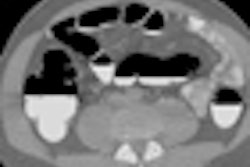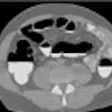VIENNA - Compared with the U.S., the U.K. is perhaps not seen as a strongly litigious country, but a new analysis of clinical negligence claims in radiology presented at the European Congress of Radiology (ECR) reveals a clear rise in recent years in the number and financial burden of malpractice suits.
Missed diagnoses, interpretation errors, and accidents account for 80% of all clinical negligence claims in English radiology departments, ECR delegates heard Monday from Dr. Dina Awad from Central Manchester University Hospitals NHS Foundation Trust.
The financial burden of litigation has risen progressively in England in the past decade, amounting to a total bill of 633 million pounds ($865 million) in 2008 alone. Recently granted access to official records (including outcomes) of clinical negligence claims held by the National Health Service (NHS) Litigation Authority, Awad's analysis has revealed that radiology is not protected from this advancing legal action.
The cost of claims in radiology in England totaled 4.5 million pounds ($6.2 million) during this period, which works out to an average 320,000 pounds ($437,000) per case.
Claims against diagnostic radiology services were most frequent in musculoskeletal (25%) and breast cases (21%), accounting together for almost one in every two claims made in England between 2001 and 2008. Other relatively litigious fields include imaging of the chest (13%) and gastrointestinal system (10%) and obstetrics imaging, although it occurs far less frequently.
Although, interestingly, the math shows obstetrics to be the most expensive specialty, as measured by average payouts made to plaintiffs.
In the musculoskeletal field, where radiologists in England are hit with lawsuits most often, missed fractures account for 10% of the total litigation cost -- around 2.4 million pounds ($3.3 million). The financial cost of legal action relating to missed fractures is recorded at 24,000 pounds ($32,800) per case; however, this increases dramatically where a missed diagnosis results in additional clinical damage.
|
The fracture types most frequently missed by English radiologists are listed below, with the top four accounting for more than 50% of all cases:
- Hip
- Foot
- Scaphoid
- Ankle
- Central spine
- Facial
- Elbow
- Knee
- Other
For any litigation brought against NHS radiology services, perceptional error (or missed diagnosis) -- i.e., the radiologist failed to spot something on the image -- is the leading cause.
The next most common mistake is interpretational (or cognitive) error -- i.e., the radiologist spotted something, but failed to make a correct diagnosis. Accidents occurring to patients during their radiology experience rounds out the top three causes of English malpractice suits.
Other, less significant contributory issues include procedural complications, operator errors, shortfalls in communication, and challenges made over patient consent.
Yet, despite the rising trend for patients to sue medics in the U.K., the research group did not suggest that radiologists' sense of this risk was in any way appropriate. Of a total 668 claims brought against radiology from 2001 to 2008, Awad revealed that 304 (56%) were settled successfully for the plaintiff, yielding an average payout of 83,000 pounds ($113.4 million). However, the length of time required to secure this win, on average, was 2.4 years.
"As we see the increasing use of MRI and CT scanning, we may see a decline in the number of litigious errors in this area," she commented, adding, though, that it could be difficult to find an effective strategy to reduce perceptional error.
"If an abnormality has not been detected by one radiologist, it may be seen by a second," she said. "So double reporting may well be the way to reduce this, but certainly it's not feasible -- given the number of examinations we're doing versus the number of available radiologists -- to do that routinely."
The group noted that with England's radiology services most at risk of litigation from missed diagnoses in musculoskeletal and breast cases, employing methods to bolster these activities specifically could see future risk diminish.
By Rob Skelding
AuntMinnie.com contributing writer
March 8, 2010
Related Reading
New European regs spotlight need for clinical radiology audits, March 6, 2010
Radiologists overestimate breast imaging malpractice risk, February 2, 2009
Breast centers can manage malpractice risk, January 13, 2009
Diligence can reduce missed lung cancers in CT, June 23, 2008
Copyright © 2010 AuntMinnie.com




